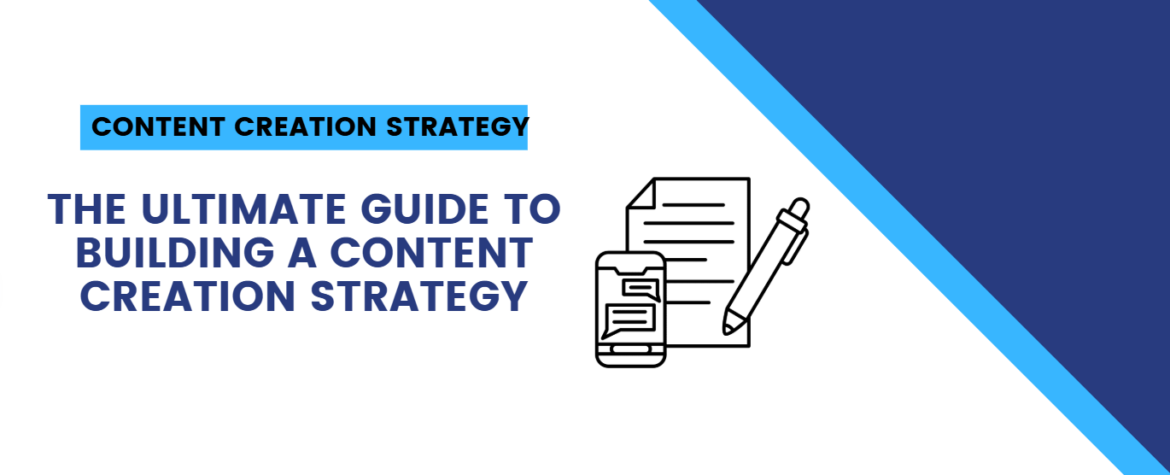In today’s digital world, content is king. Whether you’re a business, a creator, or a marketer, content is the driving force behind attracting and retaining an audience. But just creating content for the sake of it isn’t enough. You need a strong content creation strategy to ensure that the content you produce is effective, engaging, and aligned with your goals.
In this ultimate guide, we’ll walk you through the key steps of building a successful content creation strategy. Whether you’re starting from scratch or refining your current approach, these steps will help you reach your target audience and achieve the results you’re looking for.
Why is Content Creation Important?
Before diving into the strategy, let’s first talk about why content creation is so important.
- Audience Engagement: According to HubSpot, 70% of consumers prefer getting to know a company through articles rather than ads. Good content builds trust and helps you connect with your audience on a deeper level.
- Boosting SEO: Quality content is one of the main drivers of search engine optimization (SEO). In fact, businesses that blog get 55% more website visitors than those that don’t (HubSpot).
- Brand Authority: Consistently producing valuable content positions you as an authority in your niche. It’s one of the most powerful ways to establish credibility.
Now, let’s explore how to build a content creation strategy that works for you.
1. Define Your Goals
Every piece of content you create should serve a purpose. If you don’t know what you want to achieve, how will you measure success?
Start by defining your goals. Here are a few examples:
- Brand Awareness: If you want more people to know about your brand, your content should focus on reaching new audiences. This could include blog posts, social media posts, and videos that highlight your unique value proposition.
- Lead Generation: If you’re trying to attract leads, create content that encourages people to sign up for newsletters or download free resources like eBooks, whitepapers, or checklists.
- Customer Retention: If you want to keep your current customers engaged, focus on educational content or behind-the-scenes content that deepens their relationship with your brand.
Don’t forget to make your goals SMART:
- Specific: Be clear about what you want to achieve.
- Measurable: Identify how you’ll measure success.
- Achievable: Make sure your goal is realistic.
- Relevant: It should align with your broader business objectives.
- Time-bound: Set a timeframe to accomplish your goal.
For example, a SMART goal could be: “Increase blog traffic by 25% in the next 3 months by posting two SEO-optimized blog posts per week.”
2. Understand Your Audience
You can’t create content that resonates unless you know who you’re speaking to. Understanding your audience is key to creating content that grabs attention and drives engagement.
Here’s what you should consider when defining your audience:
- Demographics: Age, gender, location, job title, and income level.
- Interests: What are they passionate about? What problems do they need solutions for?
- Behavior: How do they consume content? Do they prefer blogs, videos, podcasts, or social media posts?
To get a deeper understanding of your audience, you can:
- Analyze your existing customer base or social media followers.
- Use tools like Google Analytics, Facebook Insights, and surveys to gather data.
- Monitor your competitors to see who they are targeting and how they engage their audience.
The more you know about your audience, the easier it will be to create content that speaks directly to their needs and interests.
3. Choose Content Types and Platforms
Once you know your goals and audience, the next step is deciding what type of content to create and where to publish it. Different types of content work better for different platforms and objectives.
Here’s a rundown of the most popular types of content:
- Blog Posts: These are great for SEO and providing in-depth information. According to a study by HubSpot, companies that publish 16 or more blog posts per month get 3.5 times more traffic than those that don’t.
- Videos: Video content has exploded in popularity. YouTube reports that 500 million hours of video are watched on its platform every day. Videos are great for tutorials, product demos, and behind-the-scenes content.
- Infographics: These are visually appealing and easy to share. According to Social Media Examiner, infographics are liked and shared on social media 3 times more than other types of content.
- Social Media Posts: Whether on Instagram, Twitter, or LinkedIn, social media posts can help you engage with your audience in real time. Video and image-based content perform particularly well on these platforms.
- Podcasts: Podcasting is another great way to engage with your audience. In fact, 55% of podcast listeners take action after hearing an ad, such as visiting a website or making a purchase (Nielsen).
When it comes to choosing platforms, consider where your audience spends the most time. For example:
- If you’re targeting young adults, Instagram or TikTok may be your best bet.
- For B2B content, LinkedIn is ideal.
- If you want to create long-form, educational content, blogging or YouTube is a great choice.
Don’t stretch yourself too thin by trying to be everywhere at once. Focus on 2-3 key platforms that align with your audience and goals.
4. Create a Content Calendar
One of the most important aspects of a content strategy is consistency. To stay on track, create a content calendar that outlines what content you’ll publish and when.
A content calendar helps you:
- Stay Organized: Plan out your content in advance so you’re not scrambling to come up with ideas at the last minute.
- Ensure Consistency: Posting consistently is key to building a loyal audience.
- Track Deadlines: Set dates for when content should be published, and hold yourself accountable.
For example, you might plan to publish:
- Mondays: Blog post
- Wednesdays: Social media post (with a link to the blog)
- Fridays: Email newsletter summarizing the week’s content
You can create a content calendar in Google Sheets or use a tool like Trello or Asana to keep everything organized.
5. Optimize for SEO
If your goal is to attract more organic traffic, then optimizing your content for SEO is crucial. Here are a few SEO basics to keep in mind:
- Keyword Research: Use tools like Google Keyword Planner, Ahrefs, or SEMrush to find keywords relevant to your industry. Include these keywords naturally in your content.
- On-Page SEO: This involves optimizing elements like title tags, meta descriptions, header tags, and images. Make sure your content is easy to read and uses proper formatting.
- Link Building: Including internal links to other relevant content on your site helps SEO. It’s also important to get backlinks from reputable websites in your industry.
Studies show that 93% of online experiences begin with a search engine, so focusing on SEO can make a huge difference in driving traffic to your site.
6. Measure and Adjust
Your content creation strategy shouldn’t be static. You need to measure how your content is performing and make adjustments as needed. Here are a few key metrics to track:
- Traffic: How much traffic is your content driving to your website?
- Engagement: Are people interacting with your content (likes, comments, shares)?
- Conversions: Are your visitors taking the actions you want them to (subscribing, downloading, purchasing)?
Use tools like Google Analytics, social media insights, and email campaign reports to track performance. If something isn’t working, don’t be afraid to pivot and try new approaches.
Final Thoughts
Building a successful content creation strategy takes time and effort, but it’s one of the most rewarding investments you can make. By setting clear goals, understanding your audience, creating valuable content, and tracking your results, you’ll be well on your way to building a content strategy that drives real results.
Remember, content is not just about filling up space with words or videos – it’s about creating something that provides value to your audience and helps you build stronger connections with them. Happy creating!


